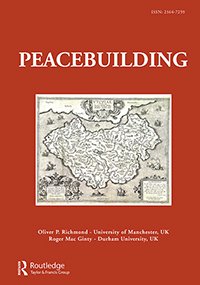By Steven Dudley, María Fernanda Ramírez, Anastasia Austin and Gavin Voss
This report aims to better understand the criminal dynamics in Durán. Located in the southwest coastal province of Guayas, Durán is a municipality, or cantón, as they are known in Ecuador, of over 300,000 inhabitants, the vast majority of whom live in the city bearing the same name.1 It has long been known as a commercial hub and small industrial center. But it is also home to a chaotic mix of shrimp farms, poorly-planned residential developments and favela-like land invasions, and unzoned areas of factories and warehouses that produce and store goods, many of which leave Guayaquil’s various maritime ports en route to all corners of the world. More recently, Durán has become a violent epicenter of criminal activity. Criminal groups use the municipality as a staging area for cocaine exiting on cargo ships through Guayaquil’s ports, while also peddling drugs on a local level. Systemic corruption, underdevelopment, and extreme poverty have facilitated this rise in criminality. More than half of Durán’s residents do not have running water or plumbing. The municipality is bereft of schools and a public university. And recent efforts to revive Durán have waned amid local and national neglect and a series of economic crises. To many residents, Durán is but a ciudad dormitorio (sleeping quarters): They work, shop, and relax in neighboring Samborondón and Guayaquil, returning to Durán to spend the night. Part of what keeps them away these days is insecurity: Durán’s homicide rate reached 147 per 100,000 in 2023 — its highest recorded rate — as crime has metastasized. Once a bustling railroad depot and industrial hub, Durán is now the poster child for the country’s rapid decline into the criminal abyss. Major Findings • Many social, economic, and political factors have converged to make Durán a violent criminal hub. Rapid, uncontained population growth, coupled with widespread corruption and malfeasance, has left a good portion of the municipality bereft of basic services such as potable water and a working sewage system. Unplanned, informal, and criminal urban development has scarred the area and jaded its residents, who have few civil society and religious organizations upon which they can channel their grievances and even fewer political options. And, like so many other parts of the country, the municipality lacks security, judicial, and regulatory forces that can effectively prosecute high-impact criminal activities. • Durán has two primary criminal organizations: the Chone Killers and the Latin Kings. These two engage in an increasingly violent battle for the municipality’s territory and its criminal economies, which include local and international drug trafficking activities. Their ties to transnational criminal networks, however, appear to be sporadic and opportunistic, rather than systemic and long-lasting. Perhaps more alarming is their penetration of the municipal government, where at least one of these groups secured public works contracts, as well as control of key government institutions that preside over everything from land tenure issues to traffic tickets. • Land trafficking is at the core of Durán’s criminal ecosystem. The illegal seizure and development of urban and rural land, often with the direct participation of corrupt officials, offers a deep well of potential profit, ranging from the sale of property to the administration of various public services. Illegal settlements also serve as staging areas for various criminal activities, including transnational drug trafficking, retail drug sales, as well as kidnapping, robbery, and extortion. Legalizing illegal settlements brings with it lucrative government contracts and the opportunity for corrupt officials to profit from kickbacks and criminal actors to launder their dirty money. It also leads to violence, including against public officials. • Ecuador’s growing role in transnational drug trafficking has significantly impacted Durán’s criminal, political, and economic landscape. By serving larger national drug trafficking networks, local gangs have gained access to substantial financial resources. Drawing from this new revenue stream, gang leaders have acquired legitimate businesses such as laundromats, hair salons, and construction companies. This interplay of criminal, economic, and political capital has also changed the political landscape, offering local gangs an entry point into the municipal government via campaign contributions, as evidenced by their systematic penetration into key government posts and public works contracts. • Durán’s gangs have a complex and varied relationship with the local communities where they operate. While some gangs exploit residents, the most sophisticated gang leaders offer them protection and other social and economic services, filling the void left by absent, corrupt, or inept state institutions, and providing a semblance of security and opportunity. This calculated approach engenders support that allows them to operate in relative safety, as well as use the community infrastructure and draw employees from a vast pool of recruits. • Homicide trends in Durán largely follow patterns seen in Ecuador over the last several years, including the type of victim, weapons employed, and the place where the murders occur. And, in some ways, Durán is a reflection of the extreme swings in violence in cities along the country’s coast. But Durán’s record 2023 homicide spike was more extreme, in part due to local events, like the murders of key criminal power brokers and the rise of a wayward, volatile new leader. These factors point to gang violence as the primary driver of homicides in the municipality
Washington, DC: Insight Crime, 2024. 74p.


















